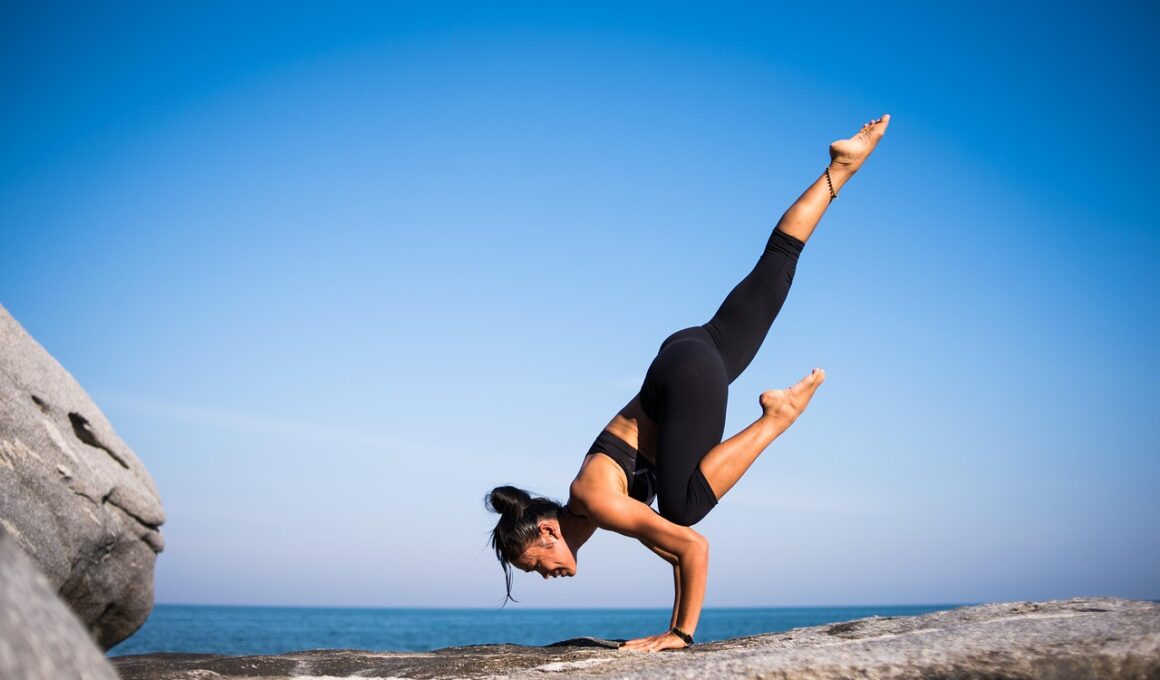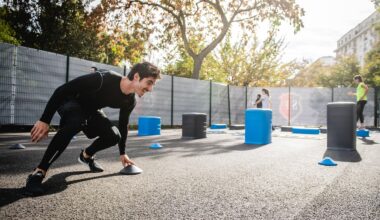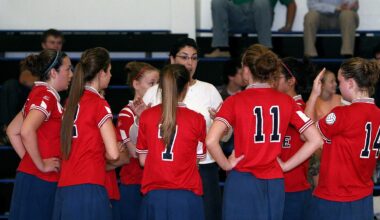Step-by-Step Guide to Regaining Balance After a Stroke
Recovering from a stroke can be a challenging journey, especially when it comes to regaining balance and coordination. First, it’s essential to understand that balance plays a significant role not just in mobility but also in overall confidence as you recover. It is important to set realistic goals and celebrate small victories throughout the process. Engaging in therapy with a qualified therapist or rehabilitation specialist is a critical step in this journey. They can assess your specific needs and create a tailored rehabilitation plan designed to improve your balance and coordination. Additionally, focusing on developing core strength can enhance stability, which is crucial during stroke recovery. Activities like sitting up straight, working on posture, and using balance equipment can greatly aid in recovery. Finally, be sure to maintain a positive mindset. Surrounding yourself with encouraging support, whether from friends, family, or support groups, can make a significant difference. It is crucial to exercise patience, as improvements in balance may take time and continuing effort. Remember, each step towards recovery is a step in the right direction.
Understanding Balance and Its Importance
Balance is the ability to maintain the body’s center of gravity over its base of support. After a stroke, many individuals experience deficits in balance, leading to difficulties in walking, standing, and performing daily activities. Identifying the root causes of balance issues is essential for creating an effective rehabilitation strategy. Stroke can result in muscle weakness, impaired vision, and coordination problems, all of which heavily influence balance. Understanding these challenges allows for better-focused exercises to improve specific areas. Incorporating a series of targeted interventions can significantly enhance rehabilitation outcomes. Common approaches include strength training, coordination drills, and proprioception exercises. Such activities enhance the brain’s ability to communicate effectively with the body, which is pivotal after a stroke. Exercise programs should ideally be supervised initially, particularly by professionals who specialize in stroke recovery. This will ensure exercises are completed safely and effectively. As strength and confidence develop, individuals can gradually progress to more complex tasks. Engaging in group exercises or activities may also provide motivation and camaraderie, enhancing the overall recovery experience.
One of the most effective methods for improving balance after a stroke is through a variety of specific exercises. Exercises like standing on one leg or performing heel-to-toe walking can substantially improve both strength and stability. However, these balanced activities should always start in a safe environment. Using support, like a wall or sturdy chair, is advisable in the initial stages of recovery. Over time, as confidence grows, individuals can gradually reduce their reliance on support. Additionally, engaging in tai chi or yoga can provide both physical and mental benefits. These practices emphasize slow and deliberate movements, fostering better body awareness and coordination. Additionally, focusing on core exercises like seated leg lifts or partial squats can strengthen critical muscle groups. Utilizing balance boards or stability balls can also add variety to the routine, enhancing proprioception and overall stability. Committing to these exercises several times a week will yield noticeable improvements over time. It’s important to tailor exercise routines to individual capabilities and interests. Always consult with a healthcare professional before beginning any new program or activity to ensure safety and effectiveness.
Incorporating Technology into Rehabilitation
In recent years, technology has become an excellent resource for individuals recovering from strokes. Wearable devices and mobile apps for tracking progress and aiding rehabilitation are now widely available. These tools not only help monitor physical activity levels but also provide support in setting and achieving personal goals. Many apps offer customizable recovery programs that cater to specific needs, allowing users to focus on balance and coordination exercises at their convenience. These innovations have revolutionized rehabilitation, making it more accessible. Another impressive advancement is the use of virtual reality (VR) technology. Virtual environments allow individuals to practice balance skills safely while providing engaging scenarios that make therapy enjoyable. Utilizing gamified experiences can increase motivation, encouraging users to engage consistently with their rehabilitation routines. Furthermore, telehealth options allow individuals to work with therapists from home, ensuring valuable guidance is accessible. With these technology tools at your disposal, it’s easier than ever to stay on track during recovery, allowing for significant improvement in balance, coordination, and overall quality of life. Embracing these advancements can make your rehabilitation journey more successful and enjoyable.
Safety is vital during stroke recovery, especially while working to improve balance. Start with safe environments, free of obstacles, and use assistive devices if necessary. Ensuring proper footwear is critical; supportive, non-slip shoes should be worn to avoid slips and falls. Additionally, having a family member or friend nearby can provide reassurance and assistance in case of an imbalance. As your confidence grows, you can gradually introduce more challenging routines. Remember to listen to your body and know your limits; pushing too hard can lead to setbacks. Take breaks when needed, especially after rigorous activities. It’s also essential to maintain hydration and proper nutrition to support the recovery process. A balanced diet rich in vitamins, minerals, and protein can help your body heal faster. Regular check-ins with healthcare professionals can help monitor progress and identify any issues. Communication with your support system is equally important; discussing fears and challenges can ease anxiety. Celebrate each milestone, no matter how small, as they contribute to your overall journey. Your recovery is a marathon, not a sprint, so patience and perseverance are crucial.
Conclusion: Celebrating Progress
As you navigate the process of regaining balance after a stroke, recognizing and celebrating progress is paramount. Each improvement, from standing independently to walking longer distances, deserves acknowledgment. It is essential to maintain a positive outlook and understand that recovery is not always linear; there will be ups and downs. Regularly revisiting your goals can help maintain motivation and provide a roadmap for your journey. Involving family and friends can further enhance your recovery experience; social interaction is an integral part of emotional well-being during this time. Documenting your progress through journaling or using apps can also provide visual reminders of how far you’ve come. Engaging in supportive communities, both online and local, can provide additional encouragement and resources. Sharing personal experiences can foster connections and give insight into others’ coping mechanisms. Remember, recovery is a unique journey for everyone. Embrace where you are on your path, whether you face challenges or experience triumphs. Commit to your rehabilitation process with determination, and soon you’ll find that overcoming hurdles can lead to significant achievements in regaining balance and coordination.
Embracing a well-rounded approach to recovery can make all the difference in achieving balance and coordination after a stroke. It is important to remember that recovery is an ongoing journey filled with opportunities for growth and progress. Incorporating physical therapy, exercise regimens, technology, and emotional support from loved ones creates a solid foundation for successful rehabilitation. Building strength, flexibility, and coordination requires time, effort, and persistence; setbacks may occur, but they are all part of the process. Always be kind to yourself and acknowledge your efforts. Whether it be mastering a new exercise or even just feeling steadier while standing, every little victory counts. Keep your mindset open to possibilities and remain adaptable in your approaches. Seek new strategies to tackle balance challenges as they arise. By committing to regular practice and utilizing available resources, you can craft a recovery plan that works best for you. Always prioritize your safety and well-being through this journey. Find joy in movement and foster connections with others who understand your struggles and triumphs. Ultimately, regaining your balance after a stroke is a journey toward restoring independence and confidence.
With each step taken towards recovery, progress becomes a personal achievement; always strive to do your best without comparing yourself to others. Gaining balance after a stroke requires a multi-faceted approach, and understanding the importance of each technique improves outcomes. Make sure to lean on professional guidance and communicate the realities of your experiences openly. Frequently engage with intensive and varied activities that challenge you while adhering to your limitations. Focus not only on physical aspects but also on ensuring emotional well-being throughout the process. Encouragement and support from family and healthcare providers are game-changers during rehabilitation. Adapt routines based on daily conditions; some days may require more focus on specific tasks, while others may allow for exploration and creativity. Balance challenges require resilience—acknowledge your fears but also your courage. With dedication, patience, and structured planning, you can work toward achieving independence in your movements. Developing balance and coordination is a significant and transformative part of stroke recovery. Celebrate each improvement, stay tuned to your body’s feedback, and remember that every effort contributes to a healthier, more balanced life.


